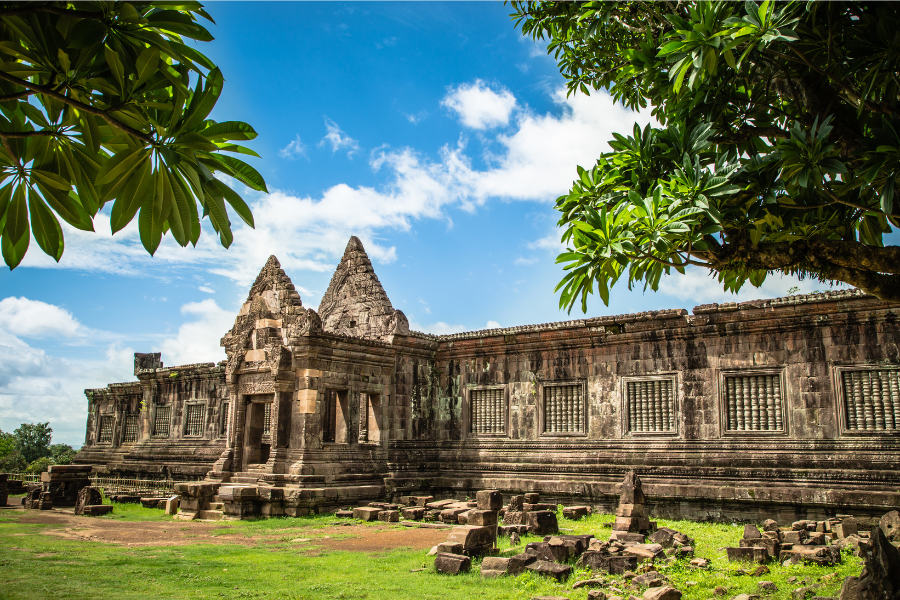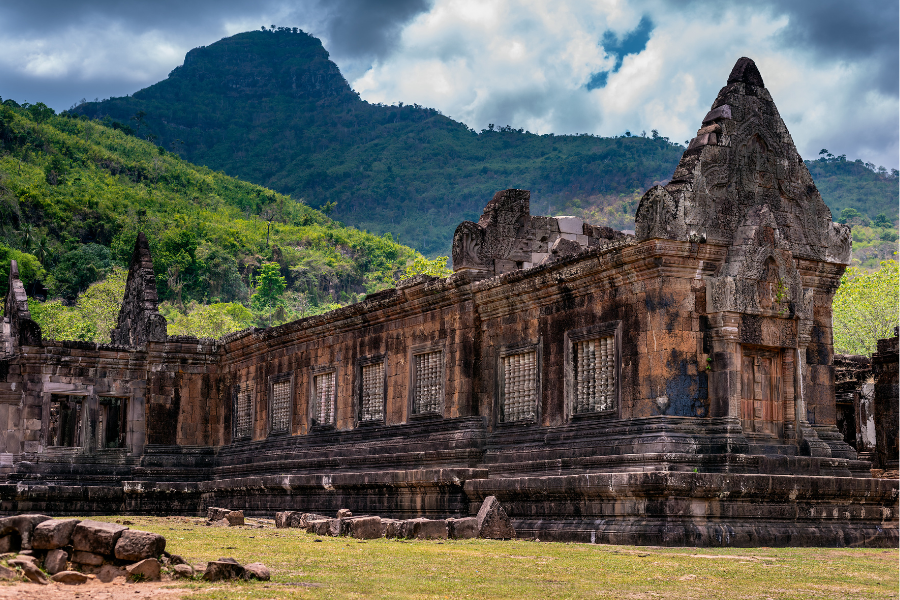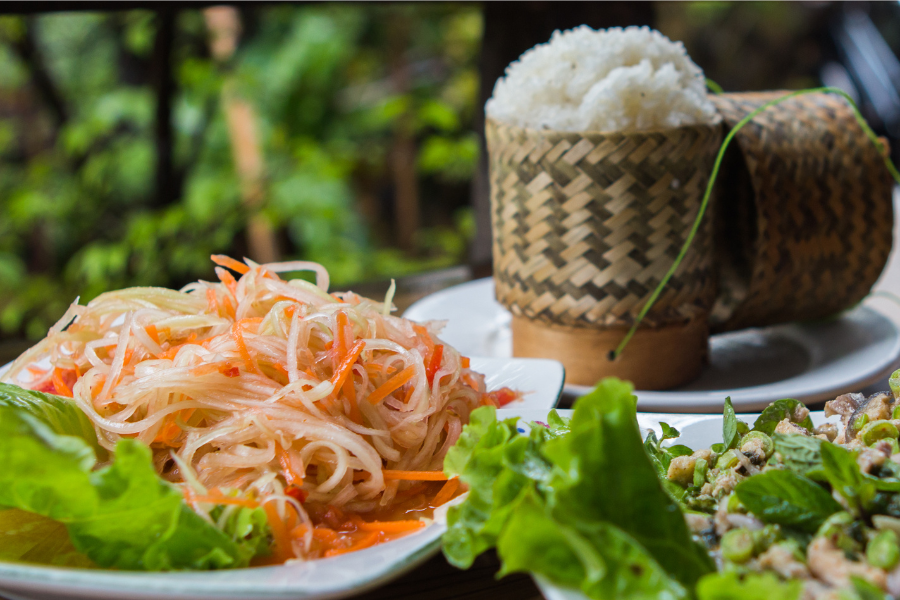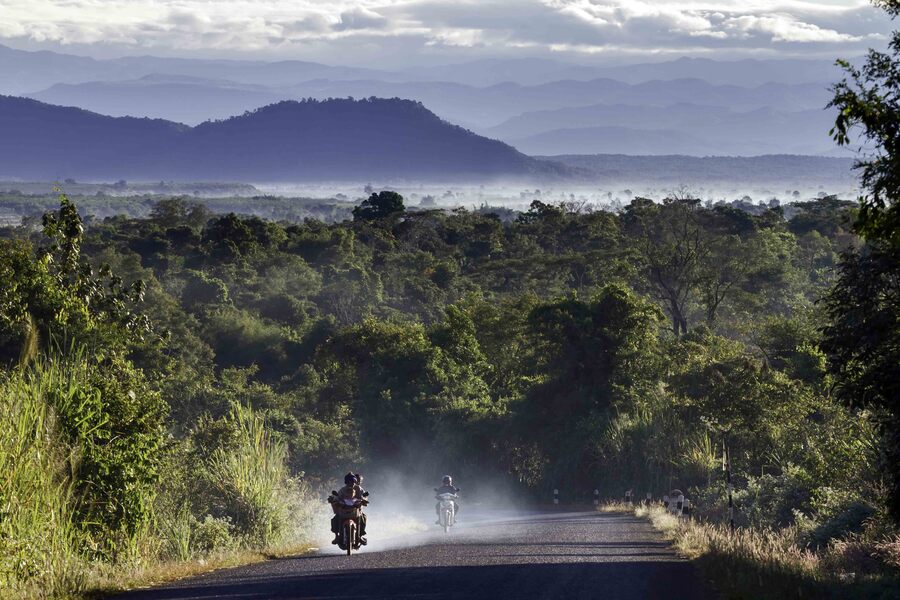Champasak

Champasak Province in southern Laos is renowned for its many stunning natural attractions, particularly its majestic waterfalls that captivate visitors. Traveling to this province holds many captivating experiences that make a lasting impression on visitors, even if they only visit once.

Champasak, a moment of peace in Laos. (Source: saylakham)
Nestled in the southwestern part of Laos, Champasak shares its borders with both Thailand and Cambodia. Spanning around 15.5 thousand square kilometers and home to about 700 thousand people, it’s one of the largest and most populous provinces in the country. This province was also part of the Lan Xang kingdoms, the very first nation of the Lao people.
Unlike more bustling areas like Vientiane or Luang Prabang in Laos, Champasak is still a tranquil and unspoiled spot. However, it has many beautiful things to see, which will surprise and impress visitors.
Champasak province, Laos, is well-known for its French colonial architecture and numerous ancient temples that were built during the Khmer Empire in the 10th century. In Champasak, you can take a cruise to explore the Mekong River, visit 4000 islands, and visit Wat Phu temple.
The region is also famous for its coffee plantations on the Bolaven Plateau, where visitors can explore lush greenery and learn about the coffee cultivation process.

Champasak is a tranquil and unspoiled spot. (Source: Im Jess Traveling)
Champasack is a land with a long history. From the I to the 9th century, Champasak was the land of the Fuman and Chenla Kingdoms, then became the predecessor of the Khmer Dynasty under Angkor.
From the 14th century, the Khmer empire began to weaken, and Pha Ngum, the first king, had the merit of unifying Champasak with the northern emirates of Muong Ka Bon (Kham Muon), Muong Phuon (Xieng Khouang), Muong Vieng, and Muong Louangphabang to form the vast Lang Xan (Million Elephants) country.
Existing throughout history, there are many relics of the Khmer under the Angkor period, such as ancient sandstone temples: Nandin Temple, Nan Sida, and Oud mong god. When Buddhism became the state religion, many temples of Theravada Buddhism were built here.

Champasak has many ancient stone temples. (Source: Bart Verweij)
The best time to visit Champasak Province in Laos is generally during the dry season, which spans from November to April. This period offers more favorable weather conditions for outdoor activities, sightseeing, and exploration of the province's attractions.
While the dry season is generally preferred, it's essential to keep in mind that Champasak Province can be visited throughout the year. The wet season (May to October) brings a different charm, with lush greenery and impressive waterfalls, but it also comes with occasional heavy rains. Travelers who don't mind a bit of rain and appreciate the vibrant landscapes might find the wet season appealing as well.

Champasak Province can be visited throughout the year. (Source: ChanwitOhm)
Si Phan Don, which means “Four Thousand Islands," is an impressive place in Laos where tourists can enjoy a slow pace of life as well as admire stunning views from almost any location.
This is where the mighty Mekong River splits into a 14-kilometer-wide network of tributaries, creating a maze of islets, rocks, and sandbanks. This provided a natural barrier, preserving Southern Laos culture from outside influences, such as during the two wars against the French colonialists and later the American imperialists.
Si Phan Don consists of many islands, each with a unique charm and beauty. The most visited islands are Don Det, Don Khon, and Don Khong. Don Khong is the largest island in the archipelago, is extremely quiet, and has fewer attractions and activities than nearby Don Khon and Don Det. Here, tourists will have a chance to participate in outdoor adventure activities such as cycling, kayaking, dolphin watching, etc.

Si Phan Don, the 4000 islands. (Source: The Crazy Tourist)
Wat Phu is the oldest temple in Laos, once the center of Hinduism, worshiping the god Shiva. In 2001, Wat Phu was awarded World Cultural Heritage by UNESCO. Although devastated by time and war, Wat Phu is still considered one of the places that preserves the cultural and historical values of Laos.
Every year, on the full moon day of March, the Wat Phu festival takes place, featuring traditional activities that showcase the culture of Champasak's ethnic groups and the history of Laos. You can consider going to Champasak and Wat Phu at this time to get the most authentic experiences.

Wat Phou is a UNESCO World Heritage Site. (Source: sittitap)
Read more: Wat Phou
The Bolaven Plateau is located in the middle of the Truong Son mountain range and sits on the eastern border of Laos and Vietnam. The name "Bolaven" means home of the Laven people, the largest ethnic group in southern Laos. This plateau is famous for its tea, coffee, and rubber plantations managed by locals. When coming here, visitors can wander through the plantations and enjoy a cup of famous coffee.
Besides that, Bolaven also possesses a natural beauty coming from poetic waterfalls. Many of the most beautiful waterfalls are found in Bolaven, including Tad Nam Tok Katamtok, Tad Fane, and Tad Yuang. The waterfalls look their best during the rainy season, from mid-July to October. If you visit between mid-October and February, you can see the coffee harvest on the coffee farms.

Bolaven plateau has many rivers and waterfalls with very beautiful scenery. (Source: Peera Sathawirawong)
Tad Somphamit Waterfall, also known as Li Phi Waterfall, means spiritual trap in Laos. Located near Don Khon in the 4,000 archipelagos of southern Laos, this waterfall is associated with a legend that traps the evil souls of both dead humans and animals.
Visitors can reach Liphi Waterfalls by boat or on foot via scenic paths that lead to viewpoints where they can admire the rushing water and surrounding landscape. Liphi Waterfall is a famous destination for tourists seeking tranquility and majestic natural beauty in Southern Laos.

Liphi Waterfall is a captivating natural wonder in southern Laos. (Source: Voyage au Laos)
Regarding cuisine, Champasak has many delicious dishes with typical Lao flavors, including: fish steamed in banana leaves, grilled chicken, chicken cooked with tamarind, sausage, pork cooked with bamboo shoots...
There are also rustic and traditional dishes such as sticky rice, bamboo-tube rice or grilled bananas, which are also delicious dishes not to be missed when you have the opportunity to visit this land.

(Sticky rice is a daily dish of Lao people. Source: MandD)
Tuk-Tuks: Tuk-tuks are a popular and convenient mode of transportation in Champasak. These three-wheeled vehicles can be hired for short distances within towns and to nearby attractions. Negotiate fares before starting your journey.
Motorbike and bicycle rentals: Renting a motorbike or a bicycle is a common and flexible option for exploring Champasak and its surroundings. It allows you to independently visit temples, waterfalls, and other points of interest. Ensure that you have the necessary license and follow local traffic rules.
Boat Tours: Given the proximity to the Mekong River and the 4,000 Islands, boat tours are a popular means of exploring the region. Many operators offer boat trips to visit waterfalls, observe wildlife, and enjoy the tranquil scenery.

Renting motorbikes allows you to experience the authentic landscapes of Champasak. (Source: Bart Verweij)
With rich history and culture, ancient temples, a blend of Lao and Khmer traditions, and many beautiful natural landscapes, this province will be the ideal destination for you. Additionally, Champasak is home to the UNESCO-recognized historical site, Wat Phu. Whether you're interested in trekking through the forests of the Bolaven Plateau or exploring unique Khmer culture, Champasak has it all.
You may also like: Laos Cycling Tours